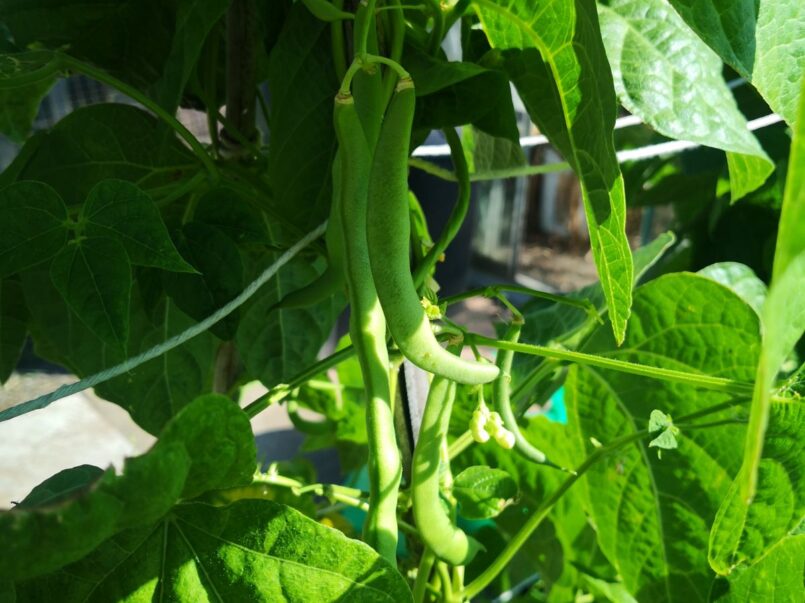French beans are delicious in stews, curries, salads, pasta dishes, risottos, stir fries and soups. They can be eaten raw, simmered and steamed. They are one of the easiest crops to grow and don’t require much space because they grow upwards. They are known as prolific growers, but you can easily freeze excess produce for consumption later in the year. It’s also easy to save seeds from the plants to grow next year, meaning you don’t have to keep buying new packets. Find out how to grow French beans the easy way.
10 reasons to grow French beans
- Packets of cheap seeds are readily available in most shops.
- Seeds are easy to handle.
- Prolific producers once they start flowering.
- You only need a small growing area because they grow upwards.
- Pests or diseases are rare.
- Low maintenance, they just need water in dry periods.
- You can easily save seeds from the plants for use next year.
- They contain vitamins and minerals, as well as protein.
- Easy to prepare and can be frozen for use later.
- They add colour and texture to many dishes.
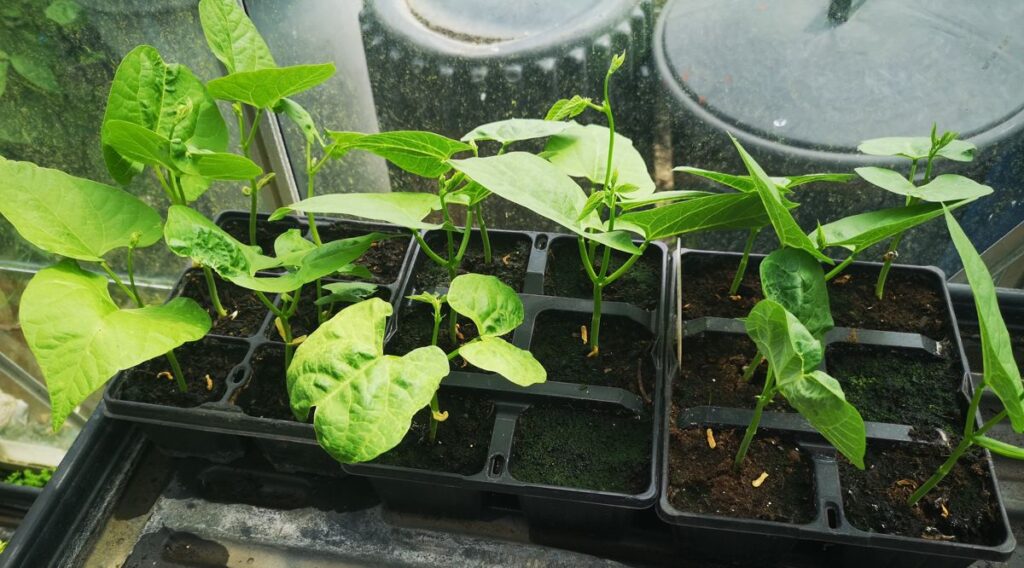
Our French beans last year – what we did
On 24th April, we sowed individual seeds in small pots and put them inside the greenhouse. We lifted them outside when they were about 8 inches high to harden them off (acclimatise them to outside conditions) in a sheltered spot. We then transferred the young plants into the ground on 28th May, each positioned next to a tall supporting cane.
From July to September, we were harvesting French beans almost every other day. We couldn’t eat them that quickly so we froze many in meal-sized portions.
Recommended varieties: Abundance and Blue Lake
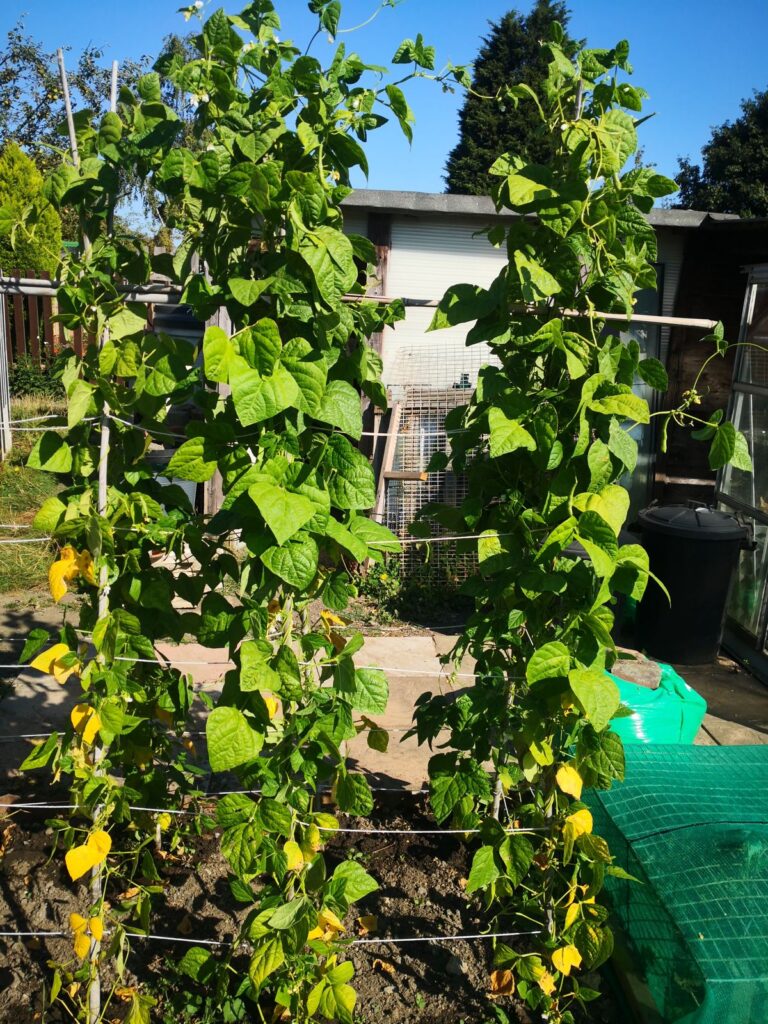
How you can grow French beans
What you’ll need:
- French bean seeds
- Some compost
- Watering can or jug
- Small plant pots
- Somewhere protected from the weather, such as a greenhouse/polytunnel/under glass
What you’ll do:
- From late April, plant one seed into compost-filled, small, individual plant pots, so they are just beneath the surface of the compost.
- Pat down gently and water.
- Keep watering every few days if they feel dry but don’t saturate them.
- When they reach about 6-8 inches tall, lift the pots outside in a sheltered place so they can acclimatise to the outdoor conditions.
- After a couple of weeks, place each young plant in the ground next to a supporting cane. Position the canes either in a wigwam shape and secure with string at the top, or in two rows angled inwards with a horizontal cane stretching along the top, also fastened with string. Wind string between the canes, working your way up to the top.
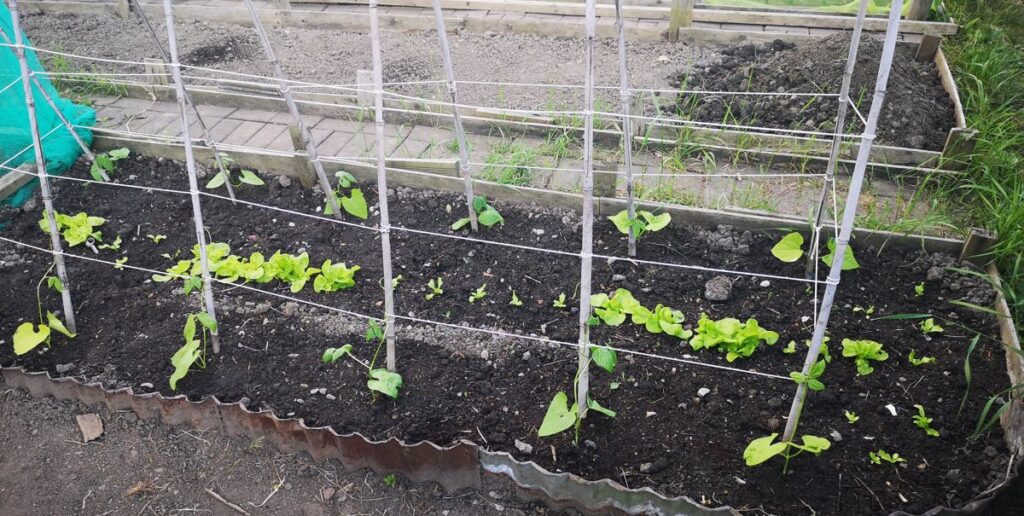
Caring for French beans
Water them in dry periods and shower the plants with water using a nozzle spray head. This encourages the beans to set.
When you don’t want them to grow any taller, simply snip off any growing stems.
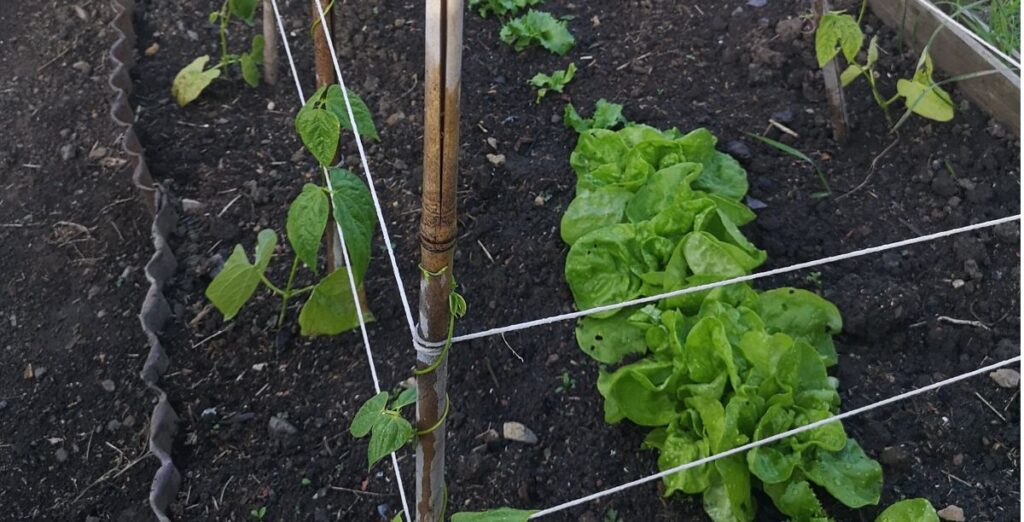
Harvesting French beans
It couldn’t be easier – simply snip off each bean with a pair of scissors.
Harvest them before they get too large. The more you harvest, the more will grow.
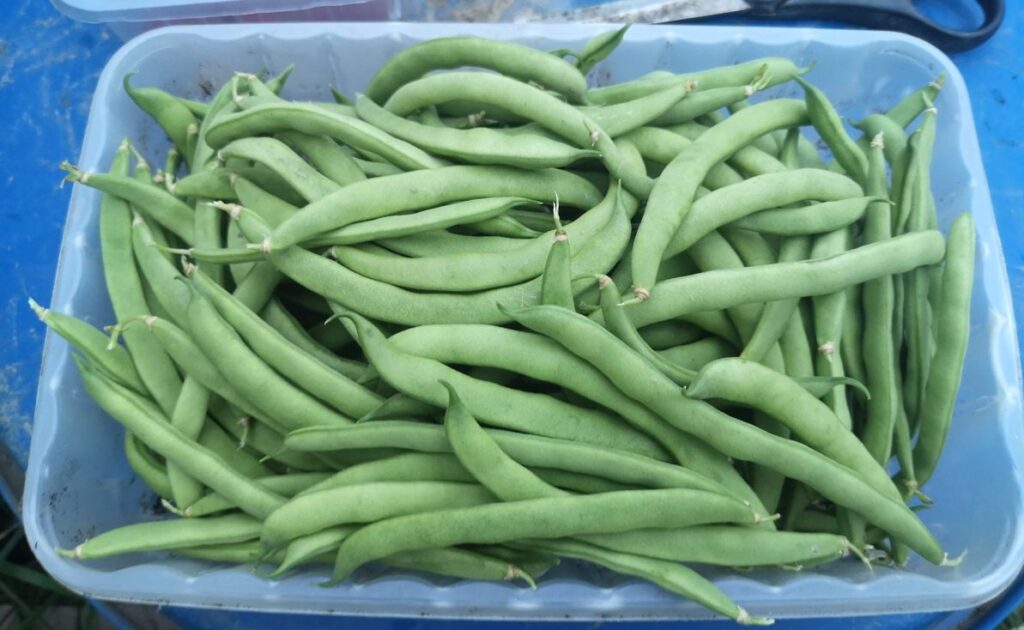
Problems
As long as you water them during dry periods, you shouldn’t encounter any problems.
Gently tie them to canes in the early days until they have wound their stems around the supports. Try to plant them in a more sheltered spot as they don’t like strong winds.
Storing French beans
Store them in a plastic bag in the fridge drawer.
Alternatively, freeze them by boiling them in water for four minutes. Then quickly plunge into cold water a few times to cool them down, remove excess moisture with paper towels, and place them in airtight bags in the freezer. Add them frozen to stews, curries or soups.
Saving seeds to grow next year
Leave some beans on the best plants until they become yellow and dry. Then snip off the pod and leave on a sunny windowsill to dry out a little more.
When the pod skin becomes very brittle, break it open and remove the individual seeds from inside. Leave them to dry further and then place in a paper (not plastic) bag. Label, date and store in a cool, dry place until next year.
